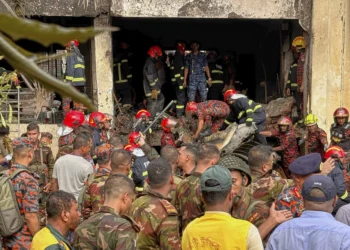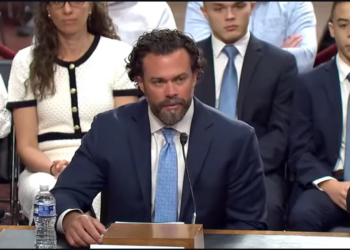“A good Navy is not a provocation to war. It is the surest guaranty of peace.” —Theodore Roosevelt
“Whoever rules the waves rules the world.” —Alfred Thayer Mahan
“A fleet of British ships of war are the best negotiators in Europe.” —Lord Nelson
“Control of the seas means security; control of the seas means peace; control of the seas can mean victory.” —John F. Kennedy
“A strong Navy is both sword and shield.” —General Douglas MacArthur
Promises Made: Six months have elapsed since Donald Trump took office. In a speech on 4 March 2025 to Congress, President Trump made a few points:
- Plans are to “resurrect the American shipbuilding industry” by creating a White House Office of Shipbuilding and offering “special tax incentives” to jumpstart both commercial and military ship production. He vowed: “We used to make so many ships … but we’re going to make them very fast, very soon.”
- He described the Navy as “underprioritized and historically small (since WWI), pledging it would become the nation’s largest.”
- He pushed for “building a 12-carrier fleet and a total of 350+ warships.”
- He called for “fundamental industry revival — establishing a new shipbuilding office and offering tax incentives.”
- He framed the increase as part of “one of the largest defense‑spending increases in history.”
In his first term, President Trump promised the nation a Navy of 355 ships. When he left office in 2021, the Navy had 297 ships. Failing to reach his goal was not entirely his fault. Congress appropriates the funds for the Navy, and many in Congress are not committed to a strong national defense.
All our nation’s current top political leadership in the majority party — Speaker of the House Mike Johnson, Senate Majority Leader John Thune, the Senate Armed Services leader, and the House Armed Services leader — have made public statements saying we urgently need more ships for the Navy. Yet, there is NO PROGRESS!
Regarding the history of Navy warship construction, let’s look at what America could do.
- Warship Production in WWII was 6,768 warships constructed during the war years (1941–1945).
- During the five years ending in June 2025, the Navy commissioned 35 warships and submarines, while 30 older ships were retired, resulting in little progress.
- Percent of budget spent on shipbuilding during WWII — 26%. Percent now — 3.8%.
- During WWII, our nation was able to build thousands of ships in five years. Despite technological advancement, current shipbuilding capacity is a tiny fraction of what it was then.
- We only spend 0.5% of the federal budget and 0.1% of GDP on shipbuilding.
- In mid-July, the Trump administration announced that the White House Office of Shipbuilding was shutting down and the function was moving to the Office of Management and Budget. Just what expertise OMB has on the topic of shipbuilding was not explained.
- Conclusion: As a nation, we are NOT serious about rebuilding our Navy.
Current status of the Navy and shipbuilding summary:
According to the United States Naval Institute, we now have fewer ships than at the end of President Trump’s first term — 293 as of 21 July, four fewer than when President Trump left office in 2021. The actual numbers are worse than that. With 293 ships in commission, the reality is that 20-25% of them at any given time are not deployable. The Navy aims to achieve 80% deployability by 2027. So, the real number of ships we have is roughly 234.
According to the Secretary of the Navy, all current shipbuilding programs are missing deadlines and are over budget, despite promises to improve.
In June, the Navy League of the United States’ Seapower Magazine reported:
The Secretary of the Navy (SECNAV) told Congress that many major shipbuilding and other programs are behind schedule and above planned cost, and he is looking for possible long-term solutions to correct the situation and rebuild readiness for the challenges of the future.
“All of our programs are a mess, to be honest,” said Navy Secretary John C. Phelan, who was testifying June 11 on Capitol Hill before the House Armed Services Committee along with Chief of Naval Operations James W. Philby and General Eric M. Smith, commandant of the Marine Corps.
“We are behind schedule, over budget,” Phelan said. “Our best-performing one [program] is six months late and 57% over budget. … So, we are working very hard to get these fixed. The Navy has begun to make some rapid changes at the public shipyards, and we’ve been talking with Electric Boat and Huntington Ingalls [HII].”
Of particular concern to the SECNAV are the Columbia-class ballistic-missile submarines and Virginia-class submarines, both classes of which are behind schedule.
Schedule and cost issues also plague the Constellation-class frigate program, and some Arleigh Burke-class guided-missile destroyers are behind schedule. Many amphibious warfare ships are in poor condition, Navy officials said.
SECNAV says the state of shipbuilding of America’s warships is a mess. It appears we have no credible plan for improvement anytime soon. If war breaks out anywhere in the world, we will fight that war with the ships we have now, and that’s not enough.
















